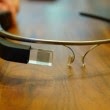 “Google Glass is finally dead,” said Will Oremus in Slate.com. This week, Google suspended sales of the “semifunctional and socially controversial” high-tech eyewear and all but admitted it was “going back to the drawing board.” Launched in 2013, Glass proved “a public relations disaster” from the start. The device was banned in bars, restaurants, and much of Las Vegas over privacy concerns, and early adopters were widely mocked as “Glassholes.” Some might argue that Google Glass was “too far ahead of its time for its own good,” said Rick Aristotle Munarriz in DailyFinance.com. But in truth, the specs were simply too “creepy” to catch on. No one wanted to sit next to a Glass-wearing stranger, wondering if his or her every move was being recorded, or put up with a Glass-bedecked dinner companion who might be secretly reading emails or even “watching porn.” And at $1,500 a pop, Glass was far “too expensive” and odd looking for a product that still had plenty of kinks.
“Google Glass is finally dead,” said Will Oremus in Slate.com. This week, Google suspended sales of the “semifunctional and socially controversial” high-tech eyewear and all but admitted it was “going back to the drawing board.” Launched in 2013, Glass proved “a public relations disaster” from the start. The device was banned in bars, restaurants, and much of Las Vegas over privacy concerns, and early adopters were widely mocked as “Glassholes.” Some might argue that Google Glass was “too far ahead of its time for its own good,” said Rick Aristotle Munarriz in DailyFinance.com. But in truth, the specs were simply too “creepy” to catch on. No one wanted to sit next to a Glass-wearing stranger, wondering if his or her every move was being recorded, or put up with a Glass-bedecked dinner companion who might be secretly reading emails or even “watching porn.” And at $1,500 a pop, Glass was far “too expensive” and odd looking for a product that still had plenty of kinks.Ignore these “premature obituaries,” said Fred O’Connor in PCWorld.com. Even though Google will no longer sell the specs in their current form, the company isn’t killing the project, just shifting it out of the company’s incubator, Google X, and into a stand-alone unit. The fact that Glass will now be overseen by Tony Fadell, an early designer of the iPod who is more recently responsible for the popular digital thermostat, Nest, also suggests Glass’s “future as a consumer device might not be over.” In the immediate term, analysts believe Google will redesign Glass for the workplace, since groups like “surgeons and engineers” have been far more embracing of the technology than everyday users.
If Google is smart, it will ditch the embedded camera altogether, said Jake Swearingen in TheAtlantic.com. Smart glasses are a promising type of wearable, since they give users “a hands-free way to look at a screen.” But new technology involves new social norms, and having a recording device attached to everyone’s faces is too much, too fast. Let this be a lesson to Silicon Valley about the “perils of developing hardware whose purpose isn’t clear,” said Conor Dougherty in NYTimes.com. Compared with the iPhone, which “cleverly combined products people already understood and used,” Glass has a value that has always seemed a little vague. In order for Google to be “the gateway through which people live every aspect of their lives,” the company must be smarter about creating products “that aren’t just useful but have more ethereal qualities like beauty and coolness.” Only time will tell if Google takes this “humbling retreat” to heart.
-As seen in The Week
Subscribe to the NetLingo Blog via Email or RSS here!

























